In today’s rapidly evolving world, the ability to adapt is more crucial than ever. Yet, many of us find ourselves resistant to new situations, experiences, or ideas. This fear of change, often manifesting as anxiety or hesitation, has deep roots in our evolutionary past. By understanding the neuroscience behind our reactions and learning evidence-based strategies to overcome them, we can unlock our full potential for growth and innovation.
The Evolutionary Roots of Our Fear of Change
Our ancestors lived in a world where new situations often signaled danger. A new environment might harbor unknown predators, unfamiliar plants could be poisonous, and alterations in weather patterns could threaten food sources. As a result, our brains evolved to approach the unfamiliar with caution, prioritizing the familiar and safe over the unknown.
This evolutionary heritage continues to shape our modern lives, even when the changes we face are far less life-threatening. The fear of change remains embedded in our neural circuitry, making it crucial to understand this biological basis in order to overcome our innate resistance to new situations. Understanding this is crucial in learning how to overcome our innate resistance to new situations.

The Neuroscience of Adaptation
Recent advances in neuroscience have shed light on the intricate processes occurring in our brains when we encounter new situations. Let’s explore some key areas involved:
1. The Amygdala: Our Brain’s Alarm System
At the core of our response to novelty lies the amygdala, a small almond-shaped structure deep within the brain. This ancient part of our neural architecture acts as an alarm system, constantly scanning our environment for potential threats.
When faced with unfamiliar situations, the amygdala can trigger a cascade of physiological responses, and our inherent fear of change, including:
- Increased heart rate
- Rapid breathing
- Heightened alertness
- Release of stress hormones like cortisol and adrenaline
These reactions, collectively known as the “fight or flight” response, ignite our fear of change, and prepare our bodies to deal with perceived threats. While this system was crucial for survival in prehistoric times, it can be counterproductive in modern situations where novelty is often beneficial rather than dangerous.
2. The Prefrontal Cortex: Our Voice of Reason
The prefrontal cortex, located at the front of the brain, plays a crucial role in executive functions such as planning, decision-making, and impulse control. This region helps us rationally evaluate new situations and override the automatic fear response triggered by the amygdala.
Strengthening the connection between the prefrontal cortex and the amygdala is key to developing a more balanced response to novelty and inhibits the typical response we would have to our fear of something unexpected. Techniques like mindfulness meditation and cognitive restructuring can help enhance this neural pathway.
3. The Hippocampus: Our Memory Center
The hippocampus is vital for forming new memories and learning from experiences. When we successfully navigate unfamiliar territories, the hippocampus helps encode these positive experiences, making it easier to approach future novel situations with confidence.
By actively seeking out and embracing small changes in our daily lives, we can build a repository of positive memories, gradually reshaping our brain’s response to new situations.
Harnessing Neuroplasticity to Overcome Resistance of Change
The key to conquering our aversion to change lies in understanding and leveraging the brain’s remarkable ability to rewire itself. This property, known as neuroplasticity, forms the foundation of neuroscience-based coaching approaches aimed at transforming our relationship with the unfamiliar.
Understanding Neuroplasticity
Neuroplasticity refers to the brain’s capacity to form new neural connections and reorganize existing ones throughout our lives. This dynamic process allows us to learn, adapt, and overcome ingrained patterns of thought and behavior – including our resistance to novelty.
When we repeatedly encounter new situations with anxiety, we strengthen the neural pathways associated with this negative response. However, neuroplasticity allows us to create and reinforce new, positive pathways, effectively rewiring our brain’s response to the unfamiliar.

Neuroscience-Based Coaching for Neural Rewiring
Neuroscience-based coaching leverages our understanding of neuroplasticity to help individuals overcome their resistance to or fear of change. This approach focuses on creating new neural pathways that associate novelty with positive outcomes, growth, and opportunity.
Key elements of neuroscience-based coaching for overcoming this resistance include:
- Mindfulness Training: Regular mindfulness practice strengthens the prefrontal cortex, the area of the brain responsible for executive functions and emotional regulation. By enhancing this region, we can better manage the fear responses triggered by the amygdala when facing new situations.
- Cognitive Restructuring: This technique involves identifying and challenging negative thought patterns associated with novelty. By consciously reframing our perceptions, we can create new neural pathways that support a more positive outlook.
- Visualization Exercises: Guided visualization activates the same neural pathways as real-life experiences. By regularly visualizing ourselves successfully navigating new territories, we can create and strengthen positive neural associations with unfamiliar situations.
- Incremental Exposure: Gradually exposing ourselves to small changes allows us to build new neural pathways in a manageable way. Each successful experience reinforces these pathways, making it easier to face larger changes in the future.
The Process of Neural Rewiring
Overcoming our resistance through neural rewiring is a process that requires consistency and patience. Here’s how it works:
- Breaking Old Patterns: The first step involves weakening the existing neural pathways associated with fear of the unfamiliar. This happens through conscious effort to interrupt automatic negative responses when confronted with new situations.
- Creating New Pathways: As we practice new responses to novelty – such as curiosity or excitement – we begin to form new neural connections. These fledgling pathways represent our brain’s adapting response to change.
- Strengthening New Connections: Consistent practice of our new responses strengthens these newly formed neural pathways. Over time, these connections become more established, making positive reactions to novelty more automatic.
- Pruning Old Connections: As we reinforce new, positive pathways, the old, fear-based connections begin to weaken through a process called synaptic pruning. This neurobiological process helps our brain become more efficient by eliminating unused or unhelpful connections.
How to Overcome the Fear of Change: Real Client Experiences
In my practice, I frequently encounter clients grappling with a deep-seated fear of or resistance to change. This fear often stems from a combination of past experiences, habitual thinking patterns, and brain circuitry that automatically associates change with danger or discomfort. Through neuroscience-based coaching, we work to rewire these thought processes, helping clients embrace change as an opportunity rather than something to avoid.
One client I worked with, Emily, faced a significant fear of changing jobs. Although unhappy in her current role, she felt paralyzed by the idea of transitioning to a new company. Her fear of change was rooted in a fear of the unknown—what if she failed in her new role or didn’t connect with her new colleagues? Together, we used cognitive restructuring and incremental exposure techniques to help her reframe her thoughts. We broke down her fear into smaller, manageable steps, allowing her to explore new job opportunities with a sense of curiosity rather than dread.
Another client, Jason, struggled with extreme fear of change when it came to his personal relationships. After going through a divorce, he found himself fearful of starting new relationships, worried that the emotional upheaval would repeat itself. Jason’s brain had created strong neural pathways linking change with pain and instability. Through mindfulness training and visualization exercises, we worked on reducing his automatic fear responses and strengthening new neural pathways that associated change with growth and the possibility of positive outcomes.
Both of these examples highlight how powerful the brain’s influence can be in our perception of change. By rewiring these neural patterns, we were able to shift both Emily and Jason from a state of fear to one of empowerment and excitement.
The Role of Neurochemistry in Rewiring
Neuroscience-based coaching also takes into account the role of neurochemicals in reinforcing new neural pathways. For example:
- Dopamine: This “reward” chemical is released when we successfully navigate a new situation, reinforcing the new, positive neural pathways we’re creating.
- Oxytocin: Often called the “bonding” hormone, oxytocin can be released during supportive coaching sessions, helping to create a sense of safety that facilitates learning and adaptation.
- GABA: This neurotransmitter has a calming effect, helping to reduce the anxiety often associated with novelty and allowing us to approach new situations more peacefully.
By understanding and leveraging these neurochemical processes, neuroscience-based coaching can create an optimal environment for neural rewiring.

The Power of Persistent Practice
It’s important to note that rewiring our brain’s response to change is not an overnight process. The principle of “neurons that fire together, wire together” underscores the need for consistent practice. Each time we consciously choose a positive response to novelty, we strengthen the associated neural pathway.
Over time, with persistent effort and guided practice through neuroscience-based coaching, we can transform our brain’s automatic response to change from fear to curiosity, from anxiety to excitement. This neural rewiring not only helps us overcome our resistance but also positions us to thrive in an ever-changing world, unlocking our full potential for growth and innovation.
Abolishing Fear of Change: Your Path to Personal Growth and Innovation
By understanding the neuroscience behind our resistance to novelty and utilizing techniques that harness our brain’s neuroplasticity, we can transform our relationship with change from one of fear to one of opportunity.
Remember, every time you face a new situation with courage, you’re not just overcoming a challenge – you’re actively reshaping your brain. Each positive experience reinforces new neural pathways, making it easier to embrace future changes.
As you continue on this journey of personal growth, celebrate your progress. Each step forward, no matter how small, is a testament to your brain’s incredible ability to adapt and evolve.
By conquering this fear of change, you open yourself up to a world of possibilities. New experiences, personal growth, and exciting opportunities await those who can embrace novelty with open arms. So take that first step today, and watch as your world transforms along with your brain.
In our rapidly evolving world, the ability to adapt and thrive in the face of change is more than just a valuable skill – it’s a necessity. By applying these neuroscience-based strategies and staying informed about cutting-edge research, you’re not just preparing yourself for change; you’re positioning yourself at the forefront of personal and professional growth.
Remember, the brain you develop through embracing change is not only more adaptable; it’s more creative, more resilient, and better equipped to innovate and lead in our ever-changing world. Your journey to overcome resistance to novelty is more than personal growth – it’s about unlocking your full potential to make a positive impact in your life and the lives of those around you.
By harnessing the power of neuroplasticity through targeted neuroscience-based coaching, we can literally reshape our brains, overcoming our aversion to change and embracing a more adaptable, resilient, and growth-oriented mindset. This transformation not only benefits us individually but also contributes to a more innovative, flexible, and progressive society as a whole. Living with fear of change, if not corrected, ultimately circumscribes our life and impairs our social interactions.
#FearOfChange #PersonalGrowth #MindsetShift #OvercomeFear #ChangeYourMindset #Neuroplasticity #EmbraceChange #Resilience #AnxietyRelief #GrowthMindset #SelfImprovement #MentalHealthMatters #BrainTraining #SelfCare #Neuroscience






